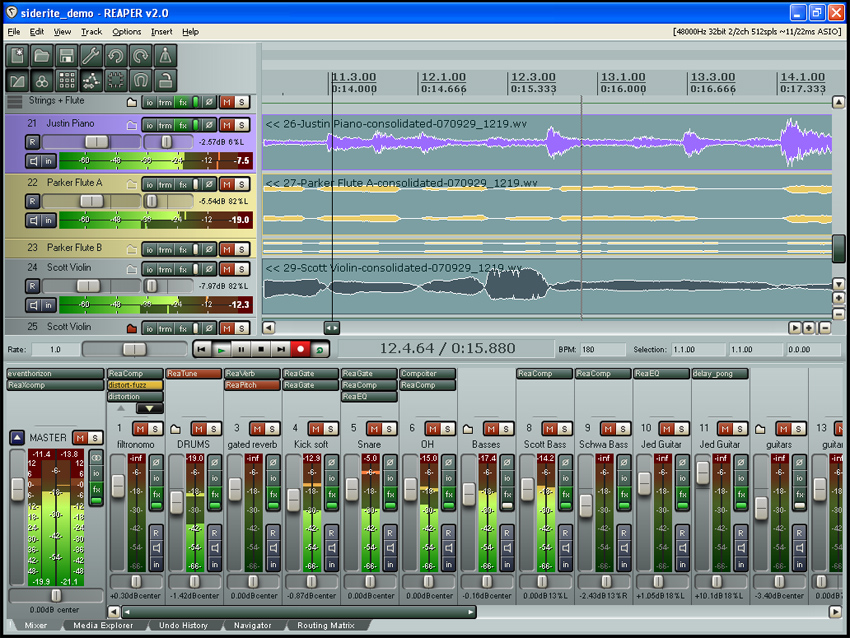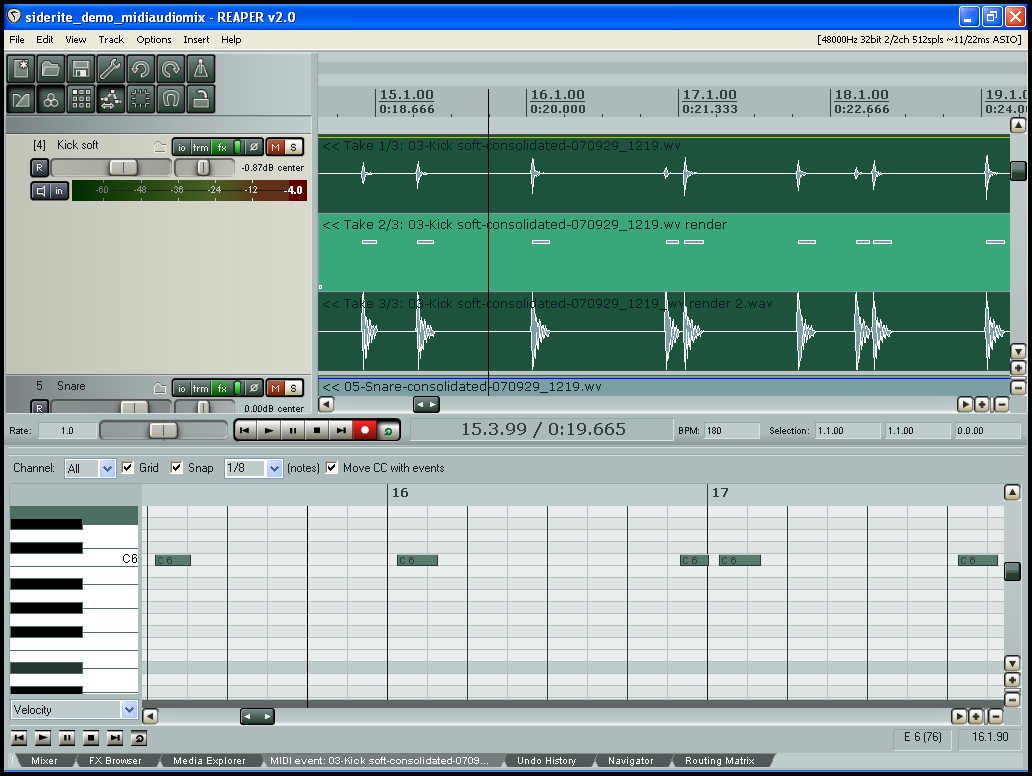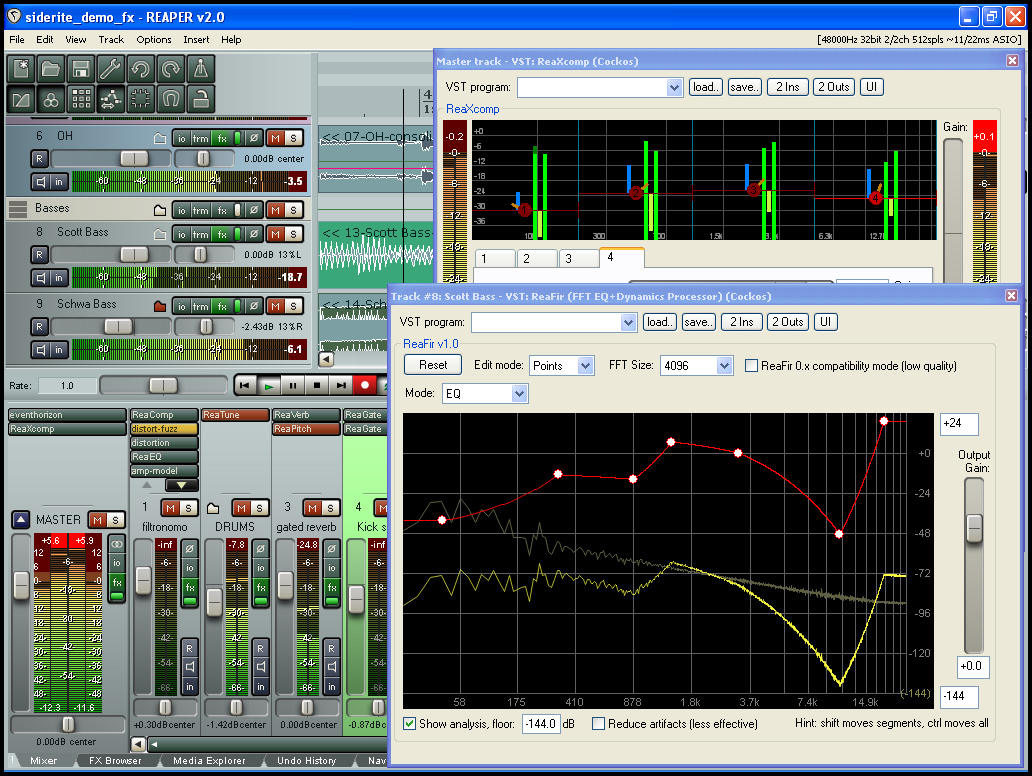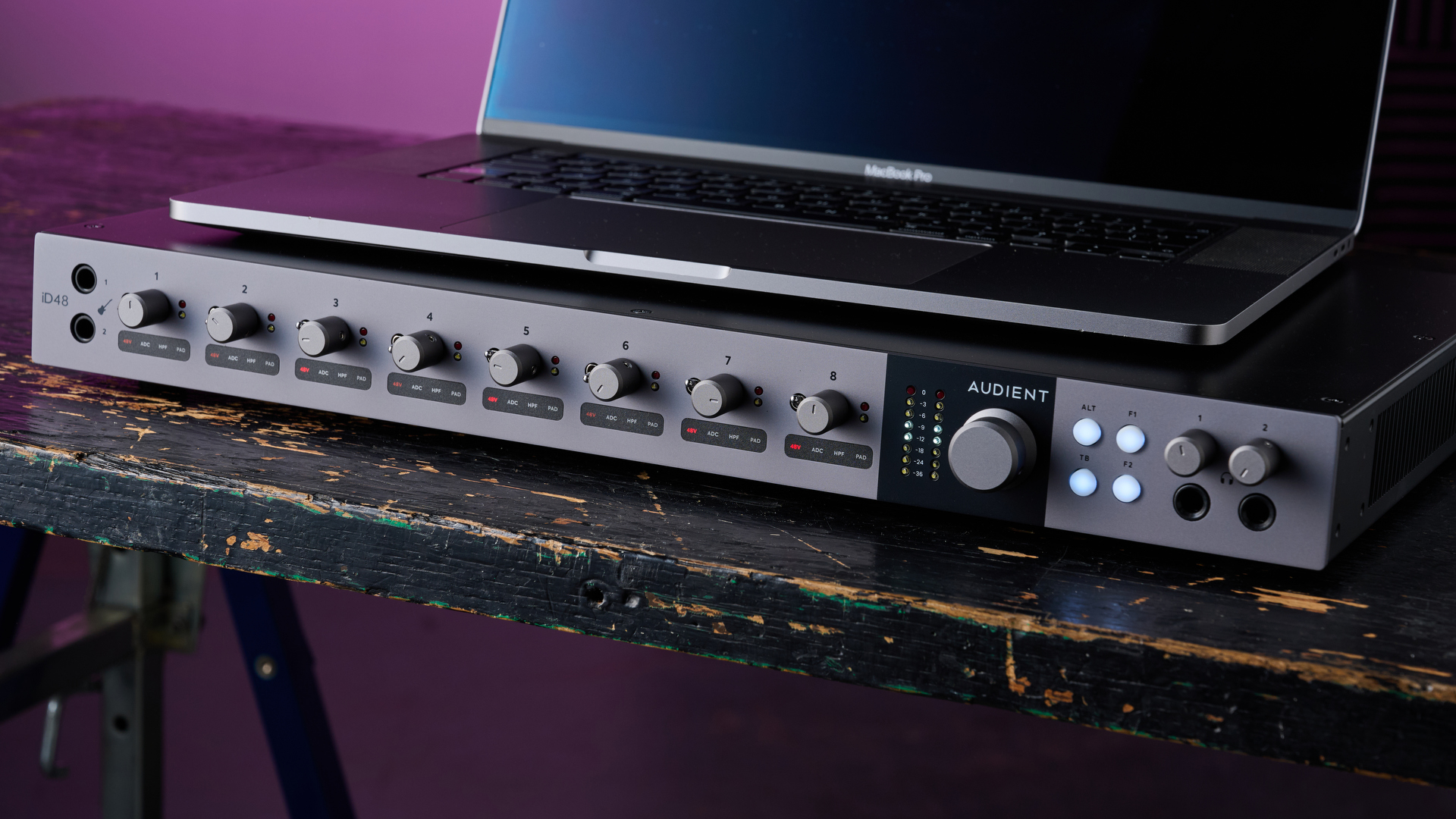MusicRadar Verdict
Reaper is a genuine alternative to the top-dollar DAWs. Version 2.0 sees Cockos upping its game once again, so why not give it a go?
Pros
- +
Fantastic list of features. Excellent timestretching. Flexible routing matrix. Agreeable pricing structure. Small footprint.
Cons
- -
No score editor. Occasional audio glitches.
MusicRadar's got your back



Reaper is an audio and MIDI sequencer with all the trimmings. It offers support for VST, VSTi and DirectX plug-ins, and is, at the time of writing, available excusively for Windows.
That said, a Mac version is in the works and slated for release during the first quarter of 2008.
Boasting a 64-bit audio engine, Reaper supports multiprocessor computers and, amazingly, has a hard drive footprint of a mere 3MB. In fact, you can run it from a USB key or any other removable media device, if you so choose. That´s a real plus for those who like to bounce between computers or studios.
Designed as a true alternative to the likes of Sonar, Cubase and Pro Tools, Reaper offers a few unique features and a pricing structure that seems a world apart. In a harkening to the past, it´s a shareware product in the truest sense of the term.
Potential users can download the fully functional application and try it out for as long as they like with no restrictions. A nag screen will pop up on launch, but the program won´t expire, bleat out offensive noise bursts or limit you in any way at all. If you decide you like it, you can pay for it.
Cockos offers prices for both hobbyists and commercial users, at $50 and $225 respectively.
What´s new?
Long-time users have watched Reaper grow into a powerhouse program over the years, thanks to Cockos´ seemingly non-stop barrage of updates. Version 2.0 sees the addition of advanced timestretching functions (courtesy of zplane.development´s elastique Pro), drag and drop support for effects routing, plus a host of other tweaks, including a tasty new default look.
On the surface, Reaper seems a lot like any other DAW, with the left-hand side occupied by the various tracks, and the right-hand side taken up by the horizontal waveforms and MIDI clips for each track.
Below is an area that´s ostensibly devoted to the mixer, though it can be used to view Reaper´s flexible routing matrix too.
Unlike some apps, Reaper doesn´t differentiate between audio, MIDI or effects tracks. A track is a track, and is assigned to whatever inputs and outputs you want. These can take the form of MIDI ports, audio interface connections or even other channels.
Every track can send to an unlimited number of other tracks, and audio sends can be pre- or post- effects, volume and/or pan pots.
All this might at first seem a little overwhelming, but it´s a cool way to work. If you get lost, you can consult the Routing Matrix window to see what´s going where.
MIDI support is getting better with each release, and most of the basics are now in place. MIDI files can be dragged into any track, and you can edit velocity, pitch and CC data via a familiar piano roll editor.
You can, naturally, use VSTi/DXi instruments, as well as VST MIDI effects. There´s ReWire support, too.
As you´d expect, automation is supported, as is ripple-editing for those times when you´d like to edit an object while keeping any associated markers intact and maintaining sync relationships with later events in the same track. This can be applied to all tracks as well.
Conclusions
We don´t have enough space to cover every detail of all Reaper´s features, but what we can tell you is that Reaper has come on in leaps and bounds since its initial release. It isn´t perfect, though.
One problem is that in-depth audio editing still requires an external audio editor, while the MIDI functions aren´t as comprehensive as we´d like. Furthermore, the smattering of included instruments seems like an obligatory afterthought (the drum machine has a whopping four sounds on board), and we´d love to see a score editor, too.
The interface can seem clunky at times, and we encountered the occasional audio dropout, but we didn´t suffer any of the stability issues that some users have reported.
What´s more, any shortcomings are made up for by such niceties as the included ReaPlugs and Jesusonic effects, and the staggering number of supported formats and customisability.
So, while still a work in progress, Reaper is already a powerful and useable DAW. Considering its more-than-reasonable pricing, no PC-based musician could have any reason not to at least try it out.
For a more detailed review of Reaper 2.0, check out issue 123 of Computer Music.
MusicRadar is the number 1 website for music makers of all kinds, be they guitarists, drummers, keyboard players, djs or producers...
GEAR: We help musicians find the best gear with top-ranking gear round-ups and high- quality, authoritative reviews by a wide team of highly experienced experts.
TIPS: We also provide tuition, from bite-sized tips to advanced work-outs and guidance from recognised musicians and stars.
STARS: We talk to musicians and stars about their creative processes, and the nuts and bolts of their gear and technique. We give fans an insight into the actual craft of music making that no other music website can.
Fantastic (free) plugins and how to use them: Full Bucket FB-3300
“It has the ingenious ability to give you easy routing to external hardware with no re-patching”: Audient iD48 review
“If this was real, it would be really impressive. But since it’s not real, it’s really impressive": Watch the bonkers four-note piano










